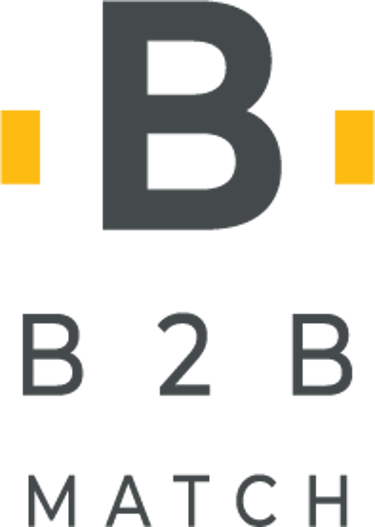Noise or Profit?
Benny Fluman
7 min read


By: Match B2B Insights Editorial Team
It’s Time to Wean Off “Volume”: Why Shiny Metrics Are Lying to You
In Israel’s high-tech scene, the dashboards usually look fantastic.
10,000 emails sent this month.
Thousands of new contacts added to the CRM.
Sequence completion rates at 95%.
On paper, it feels like progress. In reality, for many small SaaS, cybersecurity and deep-tech companies, these are Vanity Metrics—numbers that measure motion, not money.
As discussed on the Match B2B Insights podcast, this obsession with volume quietly destroys focus. SDR teams drown in low-quality lists, sales managers are buried in “leads” that never progress, and the organization becomes addicted to “more” instead of “better”.
The question for a CEO or VP Sales in a small Israeli company selling abroad is simple:
Are you chasing numbers, or building a pipeline you can actually forecast?
Changing the Currency: From “Leads” to LTV
The turning point starts when you change what you celebrate.
Most teams still track the obvious: number of emails, number of calls, number of new contacts in the CRM. These are inputs. They say nothing about business reality. Mature teams—especially in competitive global markets—shift the focus to pipeline quality and lifetime value (LTV).
Instead of asking, “How many leads did we generate?”, leadership starts asking:
How many of these leads became SQLs (Sales Qualified Leads)?
How many SQLs turned into opportunities with a real budget, need and timeline?
What is the average ACV (Annual Contract Value) of deals generated by SDRs?
What is the LTV of those customers?
In that world, you can send fewer emails, book fewer meetings—and still grow faster and more predictably.
For small Israeli companies operating globally, this is critical. You don’t have infinite SDRs. You don’t have infinite time. You can’t afford to “spray and pray” the US or Europe and hope something sticks.
You have to engineer fit and intent into the funnel.
From Wrong Metrics to Smart Metrics
Let’s translate the shift into simple terms.
Instead of obsessing over:
Number of emails sent –
Start tracking relevant reply rate: of all the people you contacted, how many replied with something that shows real interest, context or timing?Number of new contacts in the CRM –
Start tracking Lead → SQL conversion rate: how many of those contacts actually became meaningful sales conversations?SDR “screen time” –
Start tracking Average ACV of SDR-sourced deals: are your SDRs opening doors to companies that can actually pay, expand, and stay?
This is where your SDR function stops being a “noise machine” and starts being a growth engine.
Real-World Stories: When Israeli Companies Switched from Noise to Signal
To see how this works in the wild, let’s look at some real cases from small-to-medium Israeli B2B companies (names anonymized, stories real):
1. Cyber SaaS: Less Volume, More Board-Level Meetings
An Israeli cybersecurity company selling to enterprises had a broad targeting model: anyone in IT or security was fair game. The SDR team was hitting impressive outreach numbers—tens of thousands of emails per quarter—but the SQL rate was stuck around 3%.
Once they narrowed their ICP to CISOs and senior security leaders in Fortune 500 companies and began leveraging intent data (companies facing new regulatory pressure, recent breaches, or compliance audits),
a few things happened at once:
Outreach volume dropped by 50%.
SQL conversion jumped from 3% to 12%.
The number of board-level meetings doubled within one month.
Cost per SQL decreased by roughly 33%.
Same SDR headcount, fewer leads, dramatically better pipeline.
2. Supply Chain AI: Outsourcing for Reach and Tooling
A small Israeli startup in supply-chain AI was struggling with a tiny internal SDR team. They were good operators but lacked two things: deep domain language for operations executives, and access to serious data tools.
After moving to a specialized outbound agency:
Lead-generation costs dropped by around 30%.
Total qualified pipeline increased by 25% in one quarter.
They gained access to premium data platforms (like ZoomInfo and intent tools) that would have been too expensive in-house.
The difference wasn’t “more emails”. It was smarter targeting and better tooling, run by people who already knew how to speak with VPs of Operations, not just “decision makers”.
3. Legal-Tech: AI + Intent Doubles ACV
A legal-tech company providing compliance solutions realized most of their outbound was hitting the wrong timing. Nice pitch, wrong moment.
They decided to focus on leads who were actively consuming content about regulation changes—reading articles, downloading guides, attending niche webinars.
The result:
SQL conversion rate increased by 40%.
The average ACV of SDR-sourced deals doubled.
They were no longer trying to convince “everyone” that compliance mattered. They were talking to companies who already knew it did—and were actively looking for solutions.
Fewer leads. Higher ACV. Better margins.
The Unfair Advantage: Strategic SDR Outsourcing for Small Israeli Companies
For small-to-medium Israeli companies selling globally, building an internal SDR team that is:
fluent in English (or German, French, Spanish, etc.),
expert in your niche (DevOps, fintech compliance, healthtech, industrial SaaS), and
disciplined in process and data
That's incredibly hard. Recruiting, training, and retaining those SDRs often takes 6–9 months and burns a lot of salary and management cycles.
That’s why strategic SDR outsourcing has become a serious unfair advantage.
Here’s why it works so well in your specific scenario:
1. Speed and Immediate Expertise
Instead of building from scratch, you plug into a team that already “speaks the language” of your buyers.
A small Israeli DevOps company, for example, cut ramp-up time to about 30 days by working with a specialist outbound partner. Because the SDRs already understood CI/CD pipelines, observability, and cloud-native tooling, they didn’t lose months learning basic vocabulary. Within the first month, SQL volume had already doubled.
2. Economic Efficiency: Tools Without the Fixed Cost
Premium intent platforms, enrichment tools, advanced sequencing, call intelligence… all of this is expensive if you’re buying it for a single small team.
Outsourcing converts that into a shared cost model. Instead of paying full price for the stack, you pay for access to it. In many cases, companies see a ~25% reduction in cost per SQL just by leveraging their partner’s infrastructure and data.
3. Flexibility in a Volatile Global Market
Hiring and firing SDRs in-house is slow, painful, and risky. With an outsourced partner, you can:
scale up outreach for a new product launch or geography,
scale down during budget freezes,
test a new vertical without committing to permanent headcount.
For small Israeli companies, this flexibility is incredibly valuable. It lets you adjust capacity in weeks, not quarters.
How to Implement the Shift: A Practical 4-Step Playbook
Changing your SDR model—whether you keep it in-house, move to outsourcing, or run a hybrid—requires discipline. Here’s a simple implementation playbook tailored for small global companies.
1. Rigorous Onboarding and Qualification
Don’t throw your SDRs (or agency) a one-pager and expect magic.
Instead:
Run 10–15 hours of structured onboarding on your value proposition, ICP, competitive landscape, and real success stories.
Share actual call recordings (tools like Gong can help you analyze what “good” sounds like).
Clearly define what qualified means: budget, authority, need, timeline, and deal size threshold.
If qualification is fuzzy, quality will always be fuzzy.
2. Close the Loop with Sales: Two-Way Collaboration
Weekly alignment between SDRs and AEs is non-negotiable.
In those meetings:
Review recent SQLs: which turned into real opportunities, which fizzled, and why.
Collect recurring objections (price, timing, internal competition, integration fears).
Translate that insight into messaging updates and targeting tweaks in your CRM (HubSpot, Salesforce, etc.).
Example: If AEs consistently hear that prospects are worried about price, your top-of-funnel messaging should not lead with features; it should lead with ROI, cost-savings, or risk reduction.
This loop is where quality is born.
3. Leverage AI and Intent Data Instead of Guesswork
Guessing who to target is the most expensive sport in B2B.
Use tools like 6sense, Clearbit, or other intent providers to:
Identify accounts showing research behavior around problems you solve.
Trigger outreach when a key persona consumes content, attends a webinar, or searches for competitor alternatives.
Personalize messages, not with “Hi {{first name}}”, but with context:
“I saw your team recently published a report on security challenges in regulated industries. We just helped a similar company reduce compliance audit time by 40%. Would it make sense to share what we learned?”
Aim for a 20%+ increase in reply rates by focusing outreach on accounts already “warm” in behavior, not just matching on firmographics.
4. Move to LTV and ACV-Driven KPIs
Finally, bake the quality mindset into your dashboards.
For small Israeli B2B SaaS companies, realistic benchmark ranges (not “dream numbers”) for 2025 often look like this:
MQL → SQL conversion: roughly 13%–26% (up to ~40% for very well-tuned ICPs).
SQL → Opportunity: about 30%–40%.
SQL → Closed-won customer: typically 6%–20% depending on deal size and cycle complexity.
Cost per SQL: often $100–$500 at the start, with potential for ~25% reduction as messaging and ICP sharpen.
Instead of asking “How many meetings did we book?”, start asking:
Are we in the right accounts?
Are ACV and LTV going up or down for SDR-sourced deals?
Is the SDR-sourced pipeline contributing 30%–60% of new pipeline, which is often the range where SDRs meaningfully drive growth?
Review these numbers quarterly. If conversion rates are below the 5%–10% range at any key stage, it’s usually not a “sales skill” problem—it’s a targeting and qualification problem.
The Article vs. the Podcast: Same Theme, Different Altitude
In the Match B2B Insights episode on lead quality vs. quantity, Benny and Brian talk through exactly these issues:
Why big top-of-funnel numbers create a false sense of progress.
How outsourced SDR programs can act as an accelerant—if they are tightly onboarded, measured on meaningful KPIs, and integrated into your CRM and analytics.
Why continuous A/B testing of messaging, segmentation, and sequences is now mandatory, not optional.
How real-time dashboards and AI-driven lead scoring can push SDRs toward the right accounts, at the right moment.
The core message is consistent:
Activity is cheap.
Focus is expensive.
Only focus creates durable revenue.
In Summary: From Sandcastles to a Real Pipeline
For small Israeli companies selling globally, the game has changed.
Quantity alone—10,000 emails, endless sequences, infinite lists—no longer wins.
Quality driven by data, intent, and clear ICPs does.
Outsourced SDR partners, when treated as strategic extensions of your team rather than “lead factories”, can compress time-to-market, unlock tools you couldn’t buy alone, and help you build a pipeline that is actually forecastable.
The shift from volume obsession to quality-driven, data-backed outbound is not “nice to have”. It is the difference between noisy dashboards and profitable, predictable growth.
Don’t build sandcastles in your CRM. Build a pipeline your board can trust.
🎧 Want to go deeper? Listen to the full episode of “Match B2B Insights” In the episode, Benny Fluman and Brian dig into the real trade-offs between quality and quantity and share practical steps to rebuild your outbound engine around what actually moves revenue.
Address
4/12 Gershon Sharshevski,
Mazkeret Batya, Israel


